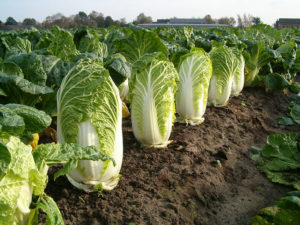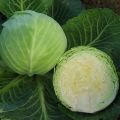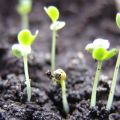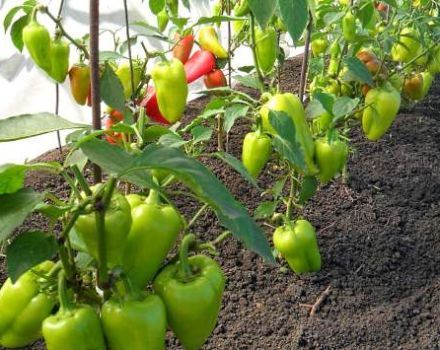What to do if the cabbage stands still and does not grow, how to feed it
Why does cabbage not grow, if the flashy, bright wrapper in which the seeds were packed guaranteed you the best result? The development of the head of cabbage stops, or there is a rotten smell from the garden a few meters around - what are the reasons for these troubles when planting in open ground?
Understanding the reasons
We figure out why cabbage grows poorly only in our country, and not in our neighbors in the country? The very first condition for the normal growth of cabbage is quality seeds. Unfortunately, it is almost impossible to check this factor when buying, since the only benchmark that you can focus on when paying money is the expiration date of the seeds with an accuracy of a month. However, there is no guarantee that the fact of the stamped date is true. You can protect yourself from buying poor quality only with a greater degree of probability by contacting experienced gardeners for seed, or by purchasing these funds in a specialized trading place that competently updates the assortment.
So, you are more or less sure of good material, but after planting in the soil, the plants do not want to behave as a decent cabbage should behave and all the time they reveal one defect in development, then another.
Let's analyze all the possible options and reasons for such a nuisance and still figure out what to do if the cabbage does not grow?
Inconsistency of soil
A common truth - a biennial cruciferous plant does not tolerate increased acidity of the soil - it simply cannot grow on such a land, no matter how well it is fed. In the best case, the cabbage seedlings will release a few large leaves, but this will dry up the cabbage power, the leaves will begin to fall, and you will get nothing but a lush bouquet.
You need to find out the acidity of the soil in advance, just by observing which plants have chosen the selected area. If sorrel, mint, plantain or buttercup grow in the places of the future bed, then the soil is definitely acidic and will cause the death of your crop.
Another simple diagnosis of soil oxidation can be undertaken with table vinegar. Crumple a small ball out of the soil and drip vinegar onto it. It is clear that an acidic environment will not give any reaction and seedlings planted in such a land will die very quickly.

Removing excess acid is the first measure to save the future harvest. The most traditional way to turn the acidic environment of the future garden into an alkaline one is to add lime and chalk powder to it during plowing before the winter period, at the rate of ½ kg per 1 m2 cultivated land.How to feed the soil more to maintain its alkaline balance? Egg shells are also one of the best fertilizers outdoors.
Lack of light
The mistake of many novice gardeners is the desire to plant as many seedling bushes as possible in a small area. The optimal distance between future heads of cabbage in the garden is 45-50 cm with a sustained row spacing of 70 cm. In some cabbage heads, the ripening rate will be higher, in others it will be lower, but not a single sprout should die from such natural unevenness.
If the planting was made thicker than it should be, the excess seedling material must be removed.
The same problem - poor sunshine intake, can also come from other plants located next to the cabbage bed. As a rule, these are tall crops with deep roots that cause deep shade - sunflowers, corn stalks.
In cabbage, which suffers from a lack of light, growth is enhanced, and it begins to grow, stretching from the roots, and at the stage of the third full-fledged leaf, it suddenly stops developing and begins to dry. Whatever you do, at this stage it will no longer be possible to save the cabbage and it will only be possible to take into account the mistakes for the future.
At the very beginning of the deformation or yellowing of the sprout, you can try to rehabilitate the cabbage using the solutions "Zircon" or "Epin-extra". And of course, if the importance of the white cabbage for you is higher than the plants shading it, you should get rid of them.
Weather conditions
At temperatures over 25With, miracles begin to happen with cabbage - the successfully grown green mass and the already tied rosette suddenly dries up, and the raised leaf turns yellow and falls. The future head of cabbage stops growing, no matter how well the soil is fertilized. Why does cabbage die under such seemingly favorable conditions?
The reason is the exceptional non-heat loving culture. If the open ground is not sufficiently moistened, and the ambient temperature is above comfortable for the culture 18C, cabbage dies, simply dehydrating. No less destructive effect on seedlings is sharp cold snaps.
Even minor frosts provoke rotting of the sprout, and the roots are affected first of all. This is one of the answers to the question why cabbage rots on the vine, but, of course, not the only reason.
Improper watering
The conditions for proper watering must begin to be observed even before young plants are planted in the ground. In room conditions, it is not easy to create the necessary temperature regime and ventilation, in addition, cabbage seedlings need to be watered often and protected from direct sunlight. Often, a place on a windowsill with a seedling box is the only option where there is an opportunity to germinate seeds. Seedlings die, before planting the soil is mainly due to drying out.

Another mistake, from the opposite extreme, lies in wait for inexperienced gardeners when the seedlings are already sitting in the open field. As soon as the hot weather sets in, the zealous owner, caring about the beds, begins to literally flood the area with seedlings with water, and then wonders why the cabbage is rotting on the vine.
Lack of essential nutrients
The explanation of why cabbage dies may be even simpler - the ovaries are often simply starving. You can feed the plants already at the stage of rapid growth, but the fertilizer must be selected with a minimum nitrogen content. How to feed young cabbage?
Most experienced owners give preference to the Kemira Kombi top dressing, which has a cumulative and gentle effect on the seedlings just shortly after they are transplanted into the open ground.
If the cabbage has stopped growing due to weather changes, has begun to rot or dry out in the outlet, try to opt for one of the recipes that have been made for several decades:
- 0.5 tbsp. tablespoons of magnesium, 0.5 tbsp.boron spoons, 1 tbsp. dissolve a spoonful of "crystalline" in a 10-liter bucket of water;
- 3 drops of iodine, 10 g of boron, magnesium sulfate - 2 teaspoons, superphosphate - 3 teaspoons diluted in 10 liters of water.
Any selected mixture is fed to cabbage in the form of abundant irrigation.
Poor growth condition - pests
One of the reasons why cabbage, which had previously grown and developed well, suddenly shows signs of decay is parasitic creatures or insects. Among insects, the worst characteristics are:
- Cruciferous fleas that damage young plants immediately after planting them in the ground;
- Cabbage moth, more precisely, caterpillars of this insect, destroying the core of the ovary, in view of which the entire inflorescence rots;
- Cabbage aphid, attacking the garden with the first warmth of spring. The danger of this harmful insect is not only that it dehydrates the cabbage leaf, depriving it of juice, but also that within 1-2 months from the activity of this insect, mold can spread throughout the planting, which are carried by these pests.
Each insect has its own control methods. If the affected plant has already shown all signs of rot, it will have to be disposed of. Cut cabbage should be destroyed along with parasites stuck to the head of cabbage. Try to get rid of any cut cabbage heads right away, as insects quickly change their location to healthy vegetables.
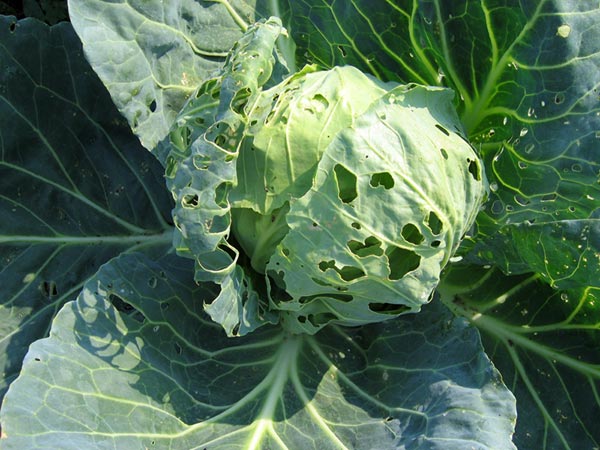
The following spray formulations will help with the cabbage moth:
- Dilute calcium arsenate, from 10 to 15 g. This solution can be used to fertilize 100 m2;
- Dilute Entobacterin to a concentration of approximately 0.3%. One liter of composition is enough to treat 10 m2.
Cabbage aphids are expelled traditionally with soapy water, tobacco infusion or diluted ash. Before the garden is processed, it is required to inspect the root of each head of cabbage and, without regret, remove those inflorescences that rot strongly. It is also advisable to get rid of all the weeds in which pests can lurk - if you do this regularly, growing this crop, there will be fewer problems with the harvest.
Cabbage diseases
There are also enough diseases from which cabbage dies, but we will single out a few that sooner or later almost every gardener encounters:
- Downy mildew. A disease that kills plants that have developed from seeds at home. Planting in open ground, as a rule, delays the development of the fungus, but the disease can be completely eliminated only by cardinal measures or the complete removal of the affected plants.
- White rot and gray rot. Cabbage heads must be stored at a lower temperature than the one at which they grew and felt comfortable in the garden - only within 2-3... If you do not comply with this storage condition, the head of cabbage quickly rots, becoming covered with a slimy coating. If we are talking about warehouses with cabbage, where the inflorescences are in close contact, the disease in just a month can affect up to several square meters of vegetables poured into a common heap.
In order to protect future plants from powdery mildew, the seeds are specifically "hardened" - before planting they are soaked in water at 50 for 15 minutes, and then transferred to a container with very cold water for a minute.
To hit both types of rot, they also begin to act with preventive heating even before the seeds are lowered into the ground. Later, in order not to let the heads of cabbage rot, it is required to carefully lay them in the storage area, without damaging the leaves and be sure to observe the required temperature. Rotten cabbage found in a lot of other vegetables should be isolated immediately.
